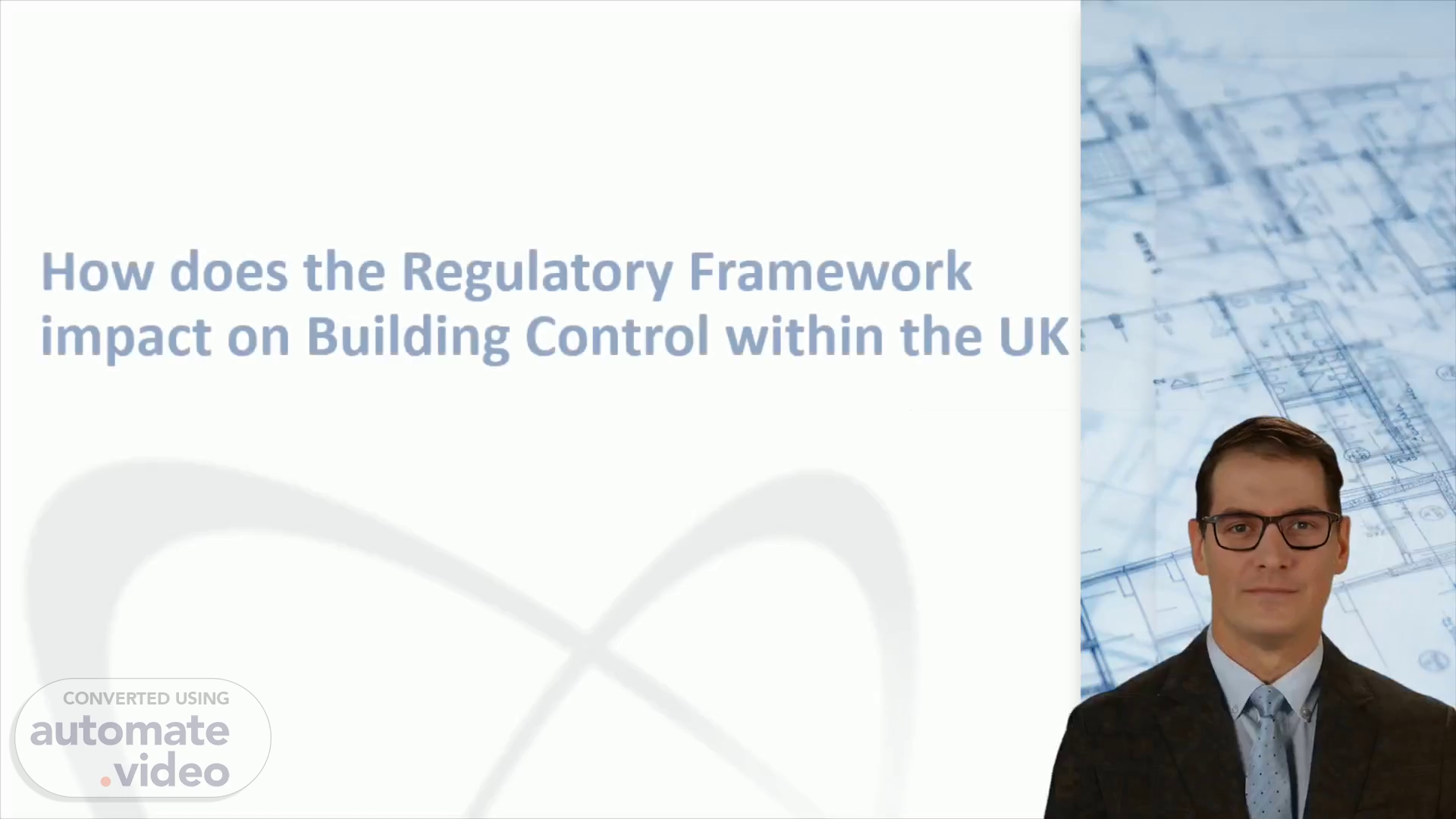
How does the Regulatory Framework impact on Building Control within the UK
Scene 1 (0s)
[Virtual Presenter] Today we will be discussing how the regulatory framework affects Building Control in the UK. Building Control sets the standards and guidelines for the design and construction of buildings, and the regulatory framework ensures that these standards and guidelines are met. We'll explore how the framework provides clarity and helps to ensure safety and quality of the built environment. So, let's get started!.
Scene 2 (26s)
[Audio] The UK has a regulatory framework for Building Control which has a major influence on the construction, design, and maintenance of buildings. The regulations and Approved Documents cover safety, sustainability, energy efficiency, and accessibility to ensure the health and welfare of occupants as well as the quality and durability of buildings. Three essential documents for supporting this framework are the Building Safety Act, the Complete Guide to Approved Documents, and the Building Control Guide. These documents provide a clear structure for enforcing and inspecting regulations, making sure they are consistent and followable..
Scene 3 (1m 5s)
[Audio] Compliance with safety and regulation standards is of utmost importance for the UK building industry. The Building Act 1984 defines the legal framework governing Building Control and the duties of Local Authorities. Additionally, the Building Regulations establish specific requirements regarding the design, construction, and alteration of buildings. Building Control Performance Standards offer a benchmark to evaluate the quality of building control services. Furthermore, the CDM Regulations aim to improve safety in the construction industry. Finally, the Building Safety Act 2022 was born in response to the tragic Grenfell Tower Fire. These laws and regulations are essential for guaranteeing safety, quality, and compliance in construction projects..
Scene 4 (1m 58s)
[Audio] UK's regulatory framework guarantees the highest standards of Building Control. The responsibility of enforcing building regulations, ensuring safety, and maintaining the quality of construction projects lies with Local Authority Building Control, Approved Inspectors, National House Building Council, Fire and Rescue Services, and Building Control Alliance. Local Authority Building Control and Approved Inspectors carry out reviewing of building plans, site inspections, and issuance of completion certificates. National House Building Council, for part, sets standards and provides warranty and insurance. Fire and Rescue Services are in charge of fire safety guidance and enforcement of fire safety regulations, with Building Control Alliance representing and supporting building control professionals. All these components collaborate to ensure that all construction projects comply with applicable safety and quality standards..
Scene 5 (2m 56s)
[Audio] The regulatory framework outlined in this presentation is essential to guarantee Building Control adheres to the highest safety regulations in the UK. Recent alterations have necessitated architects, engineers, surveyors, and other professionals involved in the design and construction process to possess the necessary qualifications and competency criteria, in order to reduce risks and avoid building failures. Moreover, Building Control is becoming a regulated profession by law, with all Building Inspectors needing to be registered with the Building Safety Regulator operated by the Health and Safety Executive. The duty holders enlisted in the CDM Regulations have greater responsibility to observe Building Regulations, nowadays more than ever. The client, Principal Designer, Designers, Principal Contractor, and Contractors must all ensure safety and quality are met. These are considerable steps towards making our built environment safer for everyone. I would like to thank you for listening and giving your attention..